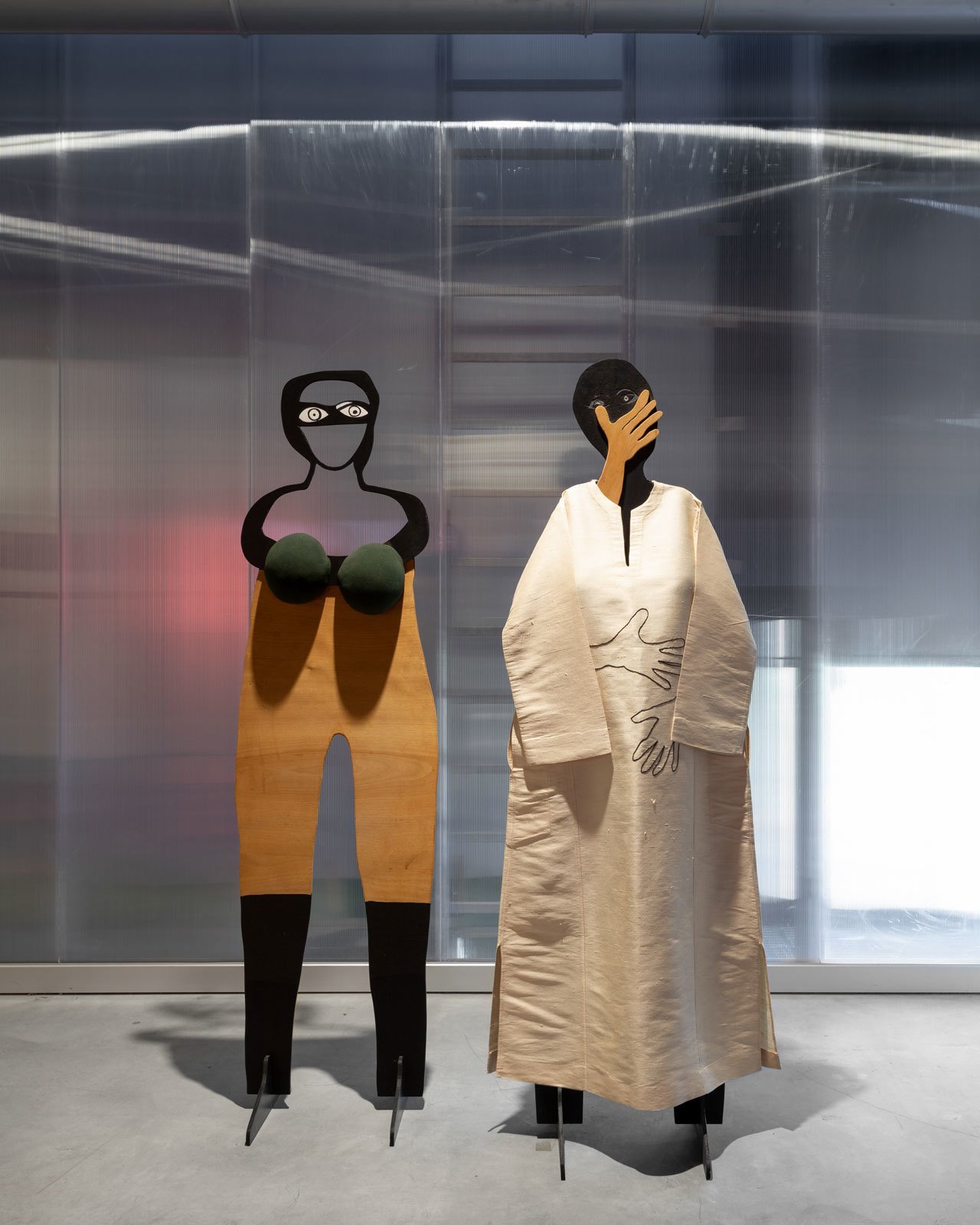Huguette Caland
(b. 1931, Beirut, Lebanon; lives and works in Venice, USA)

Tendresse (Dress #5), 1975
Thread on fabric, 137.1 x 48.2 x 30.5 cm
Mannequin #5, 1985
Wood, acrylic paint, foam, 185.4 x 48.2 x 30.5 cm
Mannequin #6, 1985
Wood, acrylic paint, foam, 185.4 x 48.2 x 30.5 cm
Courtesy of the artist
Fabric can be understood as an almost abstract energy: it can be made into a new-born baby’s swaddling clothes or a funeral shroud. Huguette Caland, the daughter of the first president of independent Lebanon, has been using the life-giving resource of clothing or its absence in her art since the 1960s. “Erotic means life,” Caland said in an interview with the Lebanese writer Hanan al-Sheikh. Unlike many of her countrywomen, the artist has always liked wearing long caftans that conceal the outlines of the body. In 1979, she even cooperated with the French couturier Pierre Cardin on a special series of dresses similar to these caftans for a line called Nour (which in Arabic means “ray of light”). This brings to mind Adolf Loos’ essay “Why A Man Should Be Well-Dressed: Appearances Can Be Revealing,” in which he discusses early twentieth-century fashion.
The Austrian theorist and practitioner of modernist architecture writes: “Let the Chandala—an untouchable beggar—sport trousers of his special cut. The royal son wants to walk in the streets incognito.” However, Caland chooses her outfits for other reasons: originally, because she was overweight in her youth, and now because she remembers the clothing of her youth fondly. The dress presented in The Fabric of Felicity is supposed to conceal the human form and its curves. Nevertheless, this “birthday suit” shows more than it hides. The artist’s projections of nudity on the fabric’s surface suggest that the naked body (albeit imaginary) is capable of transmitting identity at least as well as clothing.